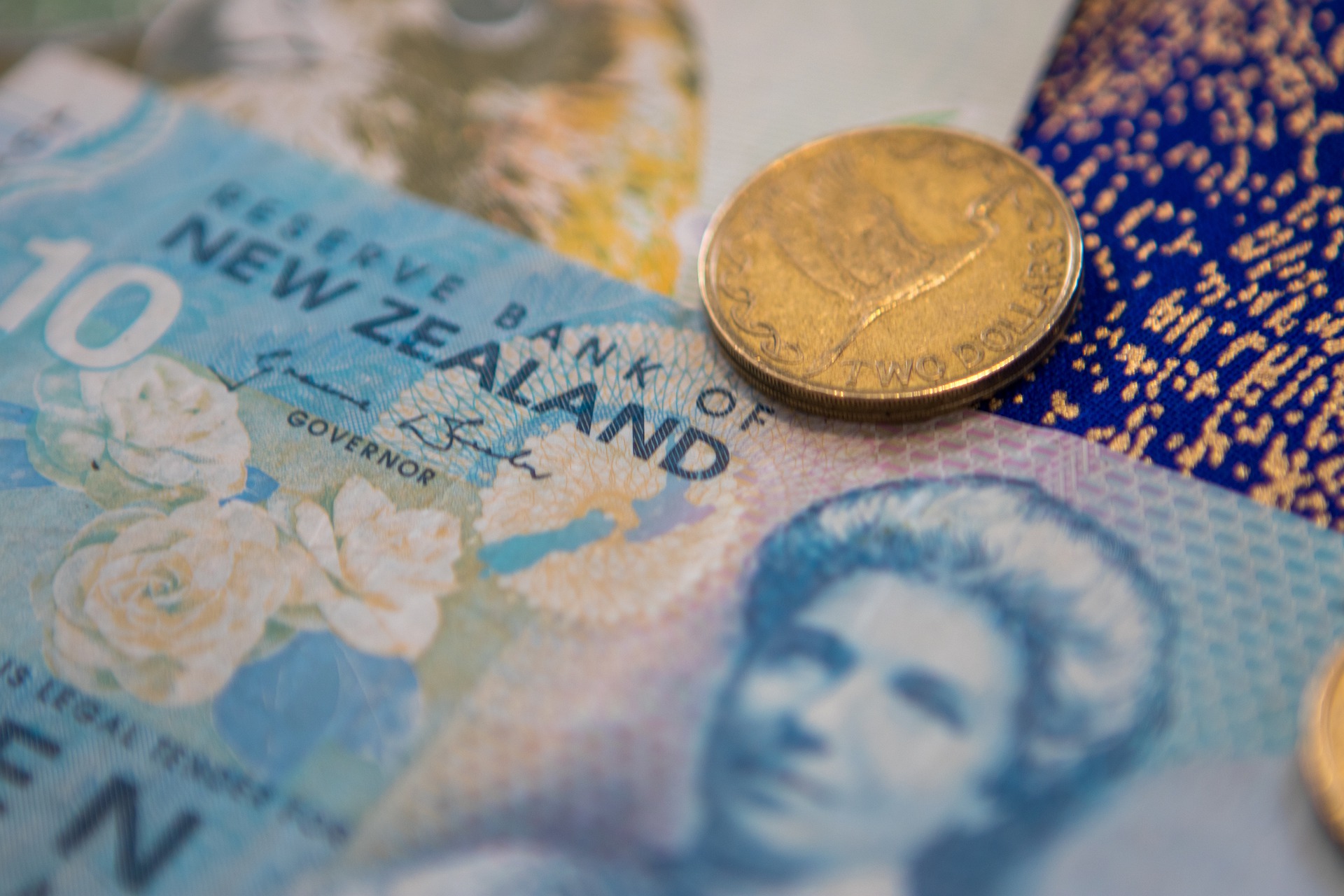The NZ Dollar to US Dollar slid from 0.7202 levels to 0.6826 in November, dropping for the sixth consecutive day, with a weekly decline of 5.2%.

NZ Dollar to US Dollar on a 5.2% Decline in November
The NZ Dollar to US Dollar slid sharply on Friday amid fears of the African covid variant affecting people, bringing a global selloff. Countries suspend cross-border flights, especially in the UK and the Euro.
NZD/USD moved below the 200 SMA levels at 0.7086 at the beginning of November. It is on a continuous downslide from these levels. It is the biggest weekly fall since August, as the NZ Dollar to US Dollar saw a decline of 5.2%.
The market rejected the decision by the Reserve Bank of New Zealand to bring a 0.25% hike in the interest rate, and the NZD/USD saw heavy selling pressure as the New Zealand Dollar declined.
Decline in Retail Sales Adds Pressure on NZ Dollar to US Dollar
New Zealand retail sales have come down for the third quarter of 2021 to -5.20%, year-on-year. Departmental stores sales fell 24%. Beverage and food came down 19%.
Retail sales slid lower with the corona pandemic hitting retail businesses. The reopening of the economy revived the economy, and business activities are back to normal again. The next quarter will show improved growth.
However, the new variant raises concern, as it may bring back restrictions in the country.
RBNZ Hikes Interest Rates by 0.25%
The Reserve Bank of New Zealand (RBNZ) increased the cash rate by 25 basis points in the policy meeting held in November 2021. It is the second consecutive hike in interest rates. The RBNZ works towards achieving a 1% to 3% inflation target. The cash rate may reach 2.6% by 2023, and another hike is expected by December 2024. It will help to tackle inflation, say authorities.
However, the market rejected the hike in rates making the NZ Dollar to US Dollar slide lower.
High Inflation Hits New Zealand
High inflation in the country made officials increase interest rates. Bank authorities state that monetary policy easing will help to curb inflation and increase employment. The central bank intends to curb inflation as early as possible.
The central bank brought in various stimulus measures to protect the economy during the pandemic, which resulted in inflation. The corona infection has come down with the vaccination drive in the country. With things getting better, quantitative easing will take place, say authorities.
Until then, inflation will remain high. Inflation may move above 5% for the next quarter. In the first quarter of 2022, it may peak at 5.7%, say authorities.
High oil prices, increasing transport costs, and supply constraints have brought up prices. Consumer prices have gone up 4.9% year on year. Crude prices are at the year’s highs, with demand pushing prices higher. Manufacturing activities are increasing, but supply constraints hamper the manufacturing sector.
RBNZ Governor Adrian Orr warns homeowners about the tough times ahead with higher interest rates. But the new variant keeps authorities vigilant on reopening the economy.
Corona Virus Resurges
New Zealand took strict measures to curb coronavirus infections. An easing of restrictions improved economic activity in the country. The country is opening its borders after many months.
The global economy entered a slowdown with lockdown restrictions. The pandemic brought a decline in economic activity in the country. High vaccination brought down virus cases, and people resumed daily activities.
However, the new South African variant is bringing up covid infections again. Europe and UK see a rise in virus infections. NZ Dollar to US Dollar is on a decline as the World Health Organization (WHO) issues a warning about the new variant of the virus. Cases are increasing in South Africa, and travel restrictions across borders have come up. WHO says that the new variant is of concern as it has high re-infection risks.
Across the Globe Activities
Political tensions are increasing between the US and China. There is fear that tension between the two countries may arise. If political ties with the US rise again, it may affect the Chinese economy. New Zealand has close trade ties with China, and trade ties between the US and China are watched closely by traders, as it may affect the NZ to US Dollar exchange prices.
Inflation in the US hit a 30-year high at 6.2%. The Fed may bring a rate hike soon to curb inflation. The expectation of a rise in interest rate drives the US Dollar Index higher.
The US Dollar hit the year high at 96.94 on November 24 and closed lower for the week at 96.10. It has been the fifth continuous week of trading in the green for the greenback. The risks connected with the South African covid variant saw the DXY moving lower on Friday. Thursday was a holiday on account of Thanksgiving in the US.
The Bank of England did not hike interest rates in November but will probably hike rates in the next meeting. The ECB may also hike rates in December.
The Fed did not hike rates in the previous meeting despite expectations. After the re-appointment of Jerome Powell as the Federal Reserve Chairman, the Fed may take decisions on the interest rates.